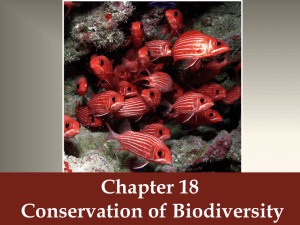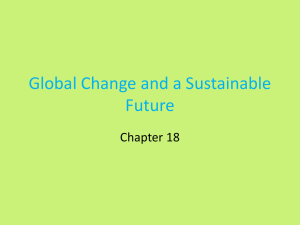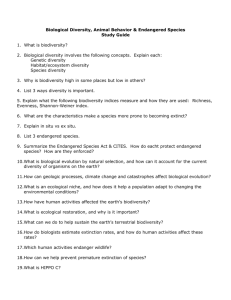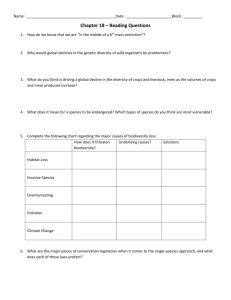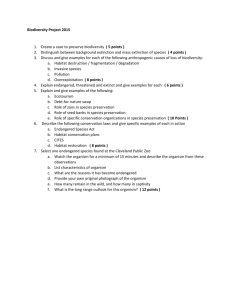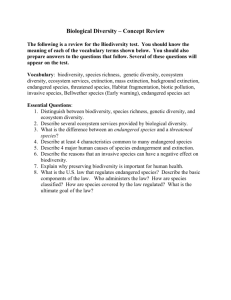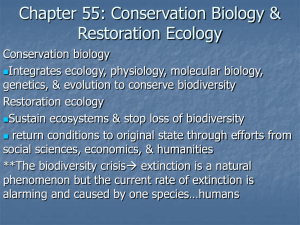Notes - APES
advertisement
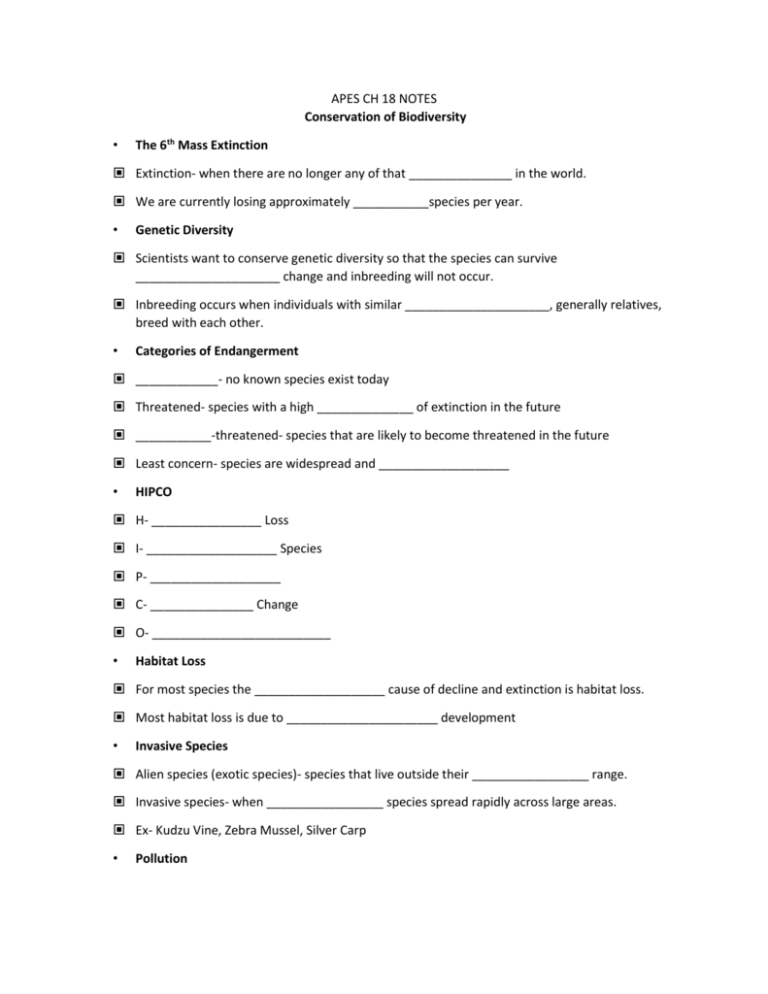
APES CH 18 NOTES Conservation of Biodiversity • The 6th Mass Extinction Extinction- when there are no longer any of that _______________ in the world. We are currently losing approximately ___________species per year. • Genetic Diversity Scientists want to conserve genetic diversity so that the species can survive _____________________ change and inbreeding will not occur. Inbreeding occurs when individuals with similar _____________________, generally relatives, breed with each other. • Categories of Endangerment ____________- no known species exist today Threatened- species with a high ______________ of extinction in the future ___________-threatened- species that are likely to become threatened in the future Least concern- species are widespread and ___________________ • HIPCO H- ________________ Loss I- ___________________ Species P- ___________________ C- _______________ Change O- __________________________ • Habitat Loss For most species the ___________________ cause of decline and extinction is habitat loss. Most habitat loss is due to ______________________ development • Invasive Species Alien species (exotic species)- species that live outside their _________________ range. Invasive species- when _________________ species spread rapidly across large areas. Ex- Kudzu Vine, Zebra Mussel, Silver Carp • Pollution Threats to biodiversity can come from toxic contaminants such as __________________, heavy metals, acids, and oil spills. • Climate Change The concern is how climate change will affect temperature and precipitation around the world, and how this will impact ____________________. • Overharvesting When individuals of a species are removed at a rate faster than the population can _________________ them. Ex- dodo, American bison, passenger pigeon. • Lacey Act One of the earliest laws in the U.S. to control the ____________ of wildlife. First passed in 1900, the act prohibited the transport of _________________ harvested game animals, primarily birds and mammals, across _________ lines. • CITES Convention on International Trade in Endangered Species of Wild Fauna and Flora Developed in 1973 to control the international trade of ________________ plants and animals. Today, CITIES is an international agreement between 175 countries of the world. • Red List The IUCN keeps a list of _________________ species, known as the red list. Each country has its own way to monitor and ______________ the import and export of animals on the list. • Conservation Legislation Marine Mammal Protection Act- prohibits the _________________ of all marine mammals in the U.S. and prohibits the import or export of any marine mammal body parts. • Endangered Species Act Endangered Species Act- first passed in 1973, it authorizes the U.S. Fish and Wildlife Service to determine which species can be listed as threatened or endangered and prohibits the _____________ of these species. ___________ these species is also illegal. The act also authorizes the government to purchase ____________ that is critical to the species. • Convention on Biological Diversity In 1992, nations came together and made a treaty to protect biodiversity. The treaty had three objectives: conserve biodiversity, _________________________ use biodiversity, and equitably share the benefits that emerge from the commercial use of genetic resources such as pharmaceutical drugs. • Size, Shape and Connectedness When designing and managing protected areas we must consider how ___________ to another area they should be, how large the area is, and the amount of edge habitat the area contains. Edge habitat- the area where two different ____________________ come together, typically forming an abrupt transition. Ex. A grassy field meeting a forest. • Biosphere Reserves Protected areas consisting of zones that vary in the amount of ____________________ human impact.

